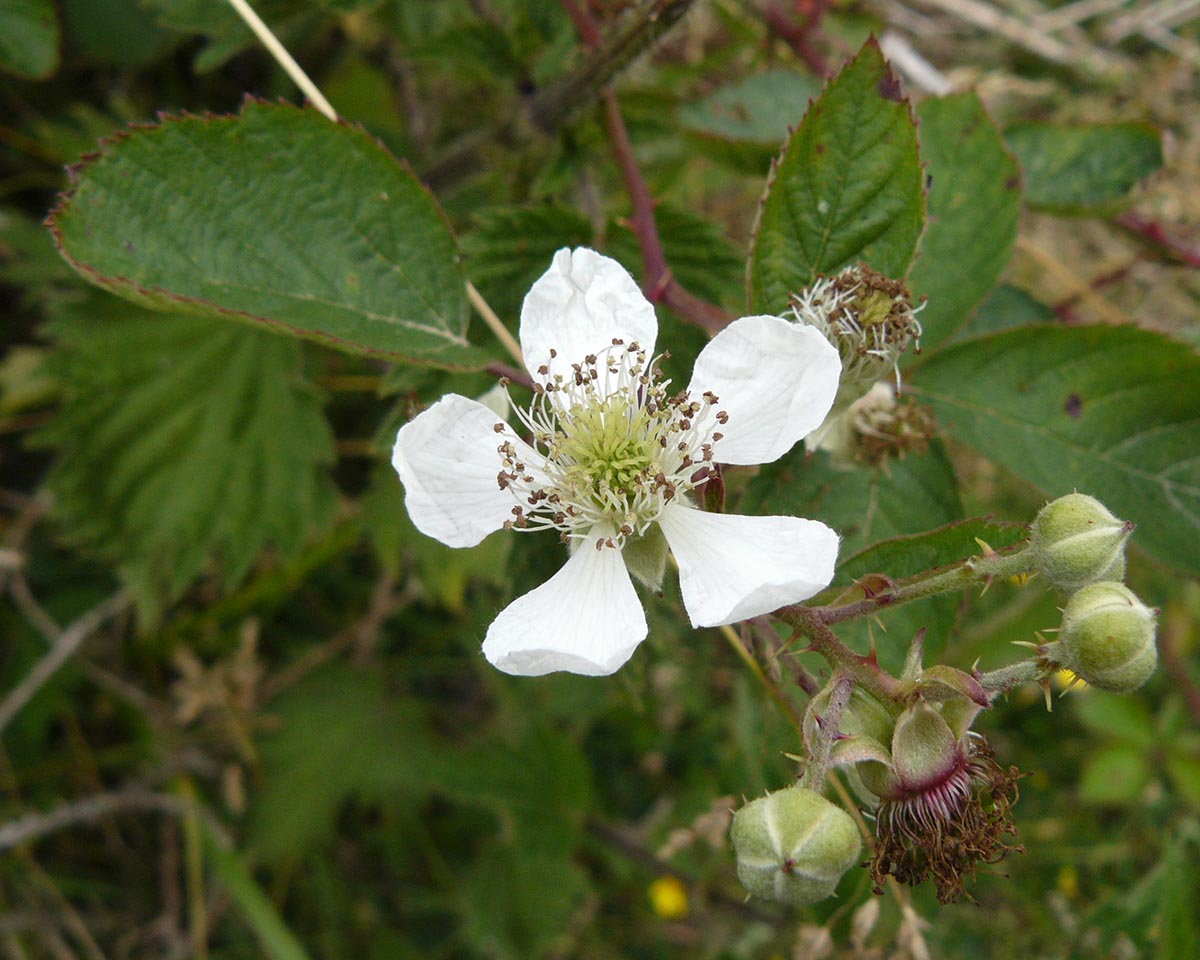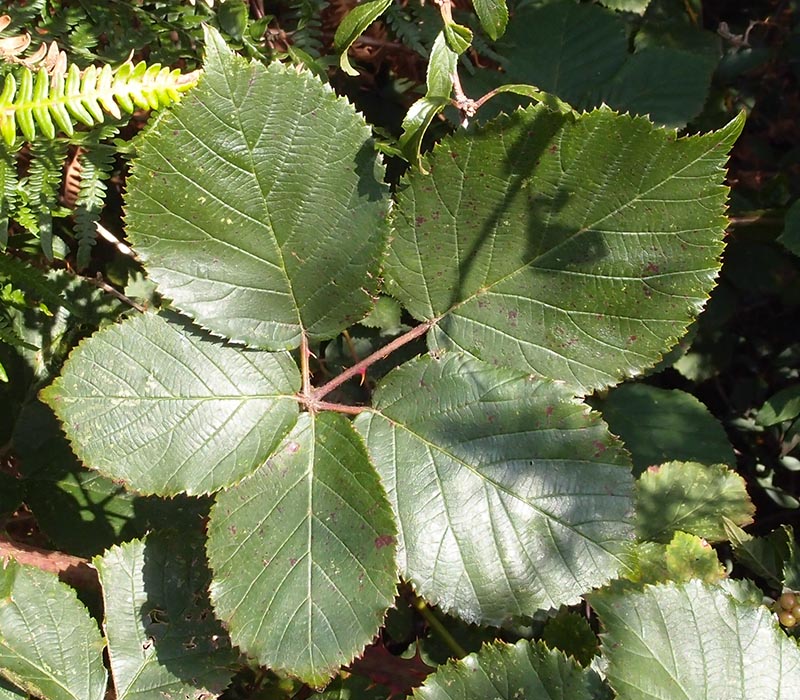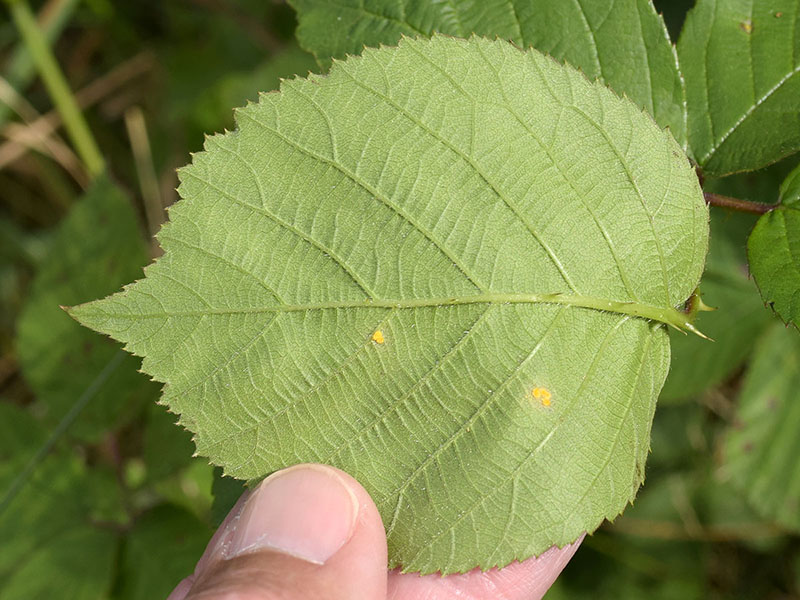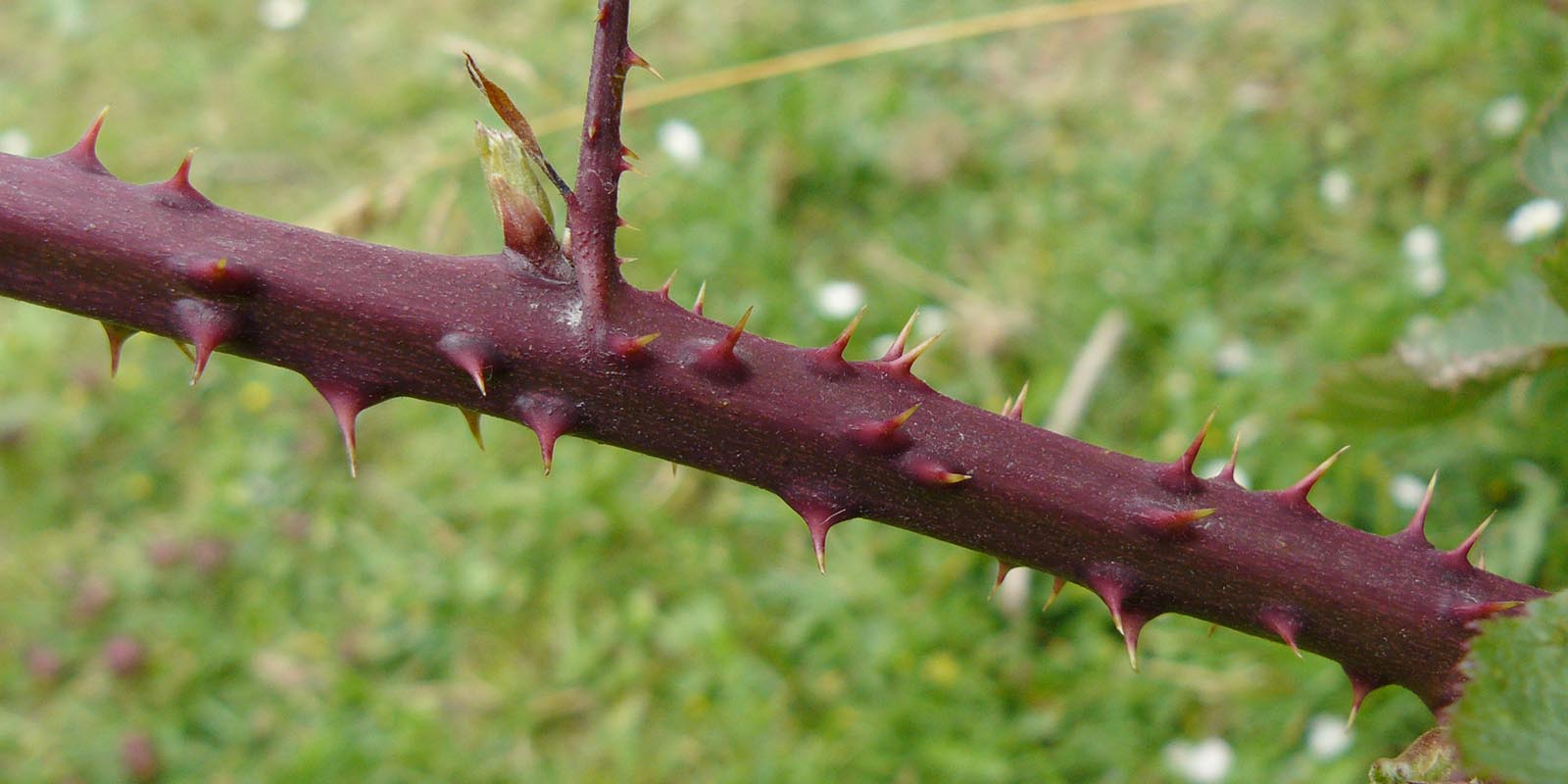
Rubus errabundus – Series Sylvatici
back to Alphabetical index · Taxonomic index
This is a common bramble in north-western England and southern Scotland and also occurs over parts of Devon, Dorset and the New Forest, Hampshire, but is very scattered elsewhere. It is typically a low-growing species of heathland and moorland, presumably offering some resistance to browsing animals due to its well-armed stems. The combination of relatively broad pink concave petals, hairy anthers and almost round leaves make it easily recognisable.

Panicles have an elongated head of flowers. The rachis is dark red, somewhat flexuose (zigzag) and with numerous prickles. Like most other Sylvatici this species has no obvious stalked glands, except for maybe a few very short-stalked glands on the pedicels of the flowers.

The broadly obovate (up to 15mm long) petals are a bubblegum pink colour, but sometimes fade to white. The petals are concave or curl inwards, giving a cupped
appearance to the flower. Stamens are long and dense, and like R. albionis have numerous tiny hairs on the anthers, a feature not shared by many other species. The filaments of the stamens are also sometimes pink, and the styles are yellowish-green.





Sepals are white-bordered, loosely reflexed to patent.

Fruit:

Leaflets are a matt yellowish-green above and virtually glabrous. The terminal leaflet is relatively small (c.7cm long), broadly elliptical to almost round with a shortish apex and shallowly cordate base; generally shallowly and evenly serrate.


The underside is a paler yellowish-green than the upperside, somewhat pubescent or thinly felted on younger leaves, but often becoming only sparsely hairy.


Stems are bluntly angled with flat sides. They have numerous stoutly-based prickles on the angles, which are mostly just shorter than the stem diameter. Stems are almost glabrous and turn a deep reddish brown or purple in exposed situations, but the prickles are crimson with yellow points, so often contrast with the stem.




